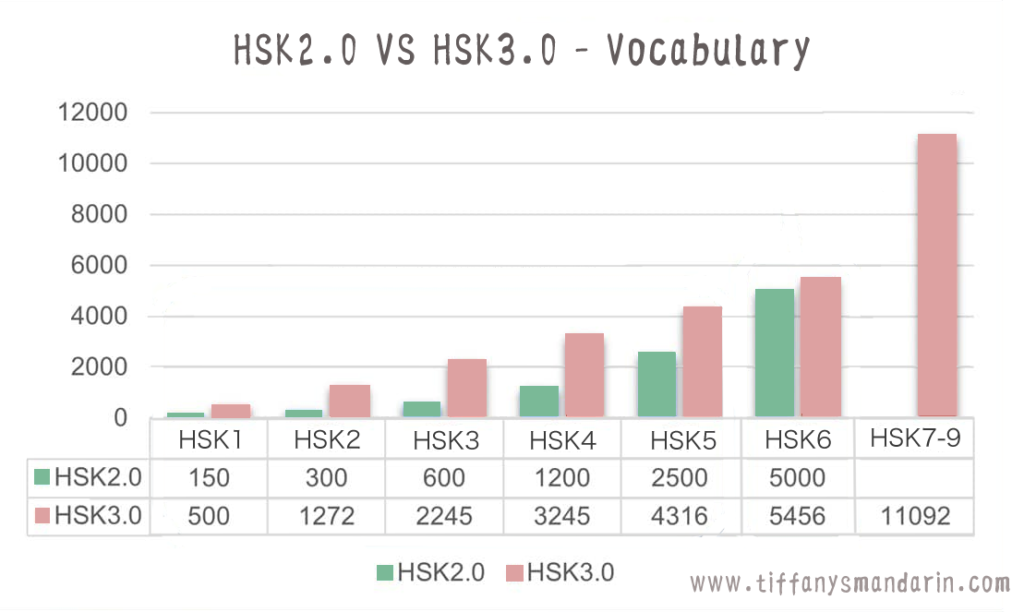Click here to modify ↘️
the characters and pinyin
In 2021, the Chinese Testing Center announced there would be a new version of the HSK test, HSK 3.0., which includes 9 new levels instead of the 6 existing ones, a full revamp of the content in each level, and a whopping addition of 3,000 words to learn.
What is new in HSK3.0?
The new version of the HSK uses the same test to assess students’ abilities across multiple levels: there’s one test for levels 1 to 3, one test for levels 4 to 6, and one for levels 7 to 9. A test taker’s level is determined by their score on a given test.
| HSK3.0 | Characters (new / total) | Vocabulary (new / total) | Grammar (new / total) | |
| Elementary | HSK1 | 300 | 500 | 48 |
| HSK2 | 300 / 600 | 772 / 1272 | 81 / 129 | |
| HSK3 | 300 / 900 | 973 / 2245 | 81 / 210 | |
| Intermediate | HSK4 | 300 / 1200 | 1000 / 3245 | 76 / 286 |
| HSK5 | 300 / 1500 | 1071 / 4316 | 71 / 357 | |
| HSK6 | 300 / 1800 | 1140 / 5456 | 67 / 424 | |
| Advanced | HSK7-9 | 1200 / 3000 | 5636 / 11092 | 148 / 572 |
Translation and Oral Test
The new official HSK standard requires an oral test for all levels as well as a translation test for levels HSK4-9. The translation test will be Chinese –> English and English –> Chinese…..which means if you are not an English native speaker, you need to study both English and Chinese to take this exam! And hopefully your hand writing is good, because the worst part is you are not allowed to type; instead you need to write all the translations by hand!
Compare to HSK2.0



